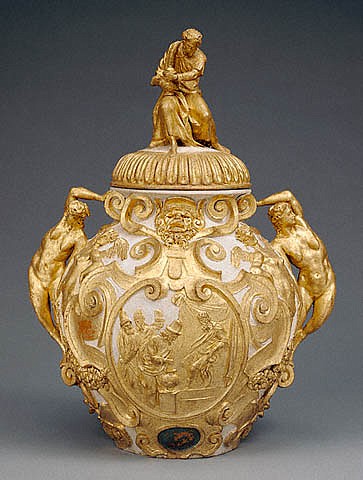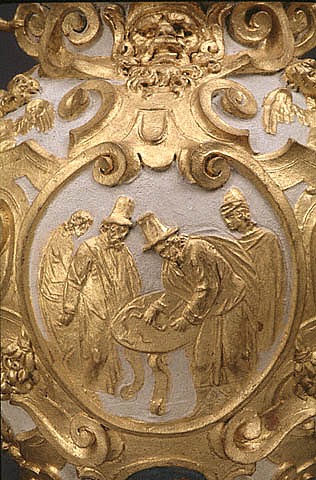Lessico
Andromaco
Celebre
per la sua teriaca, fu medico dellĺimpertatore Nerone![]() e viene citato da
Galeno
e viene citato da
Galeno![]() . Dati
reperibili solo nel web.
. Dati
reperibili solo nel web.
Andromachus (AD 37-68), physician to the Roman emperor Nero, was said to have developed a theriac more effective than mithridatum. After removing some of the ingredients of the original concoction, he added an assortment of substances including viper flesh (following the ancient principle of like cures like) and opium. It was said that about 73 ingredients were needed.
Galen even experimented with fowl to prove its efficacy. As time went by, more and more ingredients were added to the concoction. By the Middle Ages, the theriac of Andromachus had more than a hundred ingredients, needed years to prepare, and had so much stuff in it that it had become solid in consistency (the original theriac was a liquid). There have been countless variations in the original formula throughout the ages but their efficacy was finally questioned by William Heberden in 1745.

Theriac
Drug Jar - Attributed
to Annibale Fontana![]()
Italian, about 1580-1590
This terracotta drug jar, one of a pair, was made to contain a specific preparation: theriaca Andromachi. The preparation was named for Andromachus, shown seated on the lid clasping a drug jar against his thigh, who was the court physician for the Roman Emperor Nero. Commanded by Nero to improve on an existing antidote for poison, Andromachus removed some ingredients and added others, the most important of which was vipers' flesh. The relief on the back of the jar shows Andromachus in the act of cutting up some vipers, while being observed by a group of doctors, all wearing tall hats. The relief on the front shows the doctor presenting his new drug to the Emperor.

The
relief on the back of the jar depicts the doctor Andromachus
cutting
up some vipers as a group of doctors watch
Scultore, orafo e medaglista italiano (Milano 1540-1587). Attivo soprattutto a Milano, fu artista agile e versatile, che uný suggestioni michelangiolesche al gusto manierista lombardo, giÓ orientato verso il barocco. La sua impresa scultorea pi¨ importante fu la decorazione, con statue e rilievi, della facciata di Santa Maria presso San Celso.
Born 1540, died 1587 - Italian sculptor, medalist, engraver. Considered one of the most important Milanese sculptors of the last quarter of the 1500s, Annibale Fontana began his career working as a medalist and engraver. Active in Milan, his membership in the Accademia della Val di Blenio brought him commissions from patrons of high rank and Milanese intellectuals who appreciated his portrait medallions and rock crystal engravings.
These show a sophisticated use of space as Fontana accommodated large, active compositions to small, low-relief objects in metal, rock crystal, and hardstone. After a visit to Rome, where he probably studied works by Michelangelo and his followers, Fontana traveled to Palermo in 1570. There he carved large-scale marble reliefs or the cathedral.
Upon his return to Milan, Fontana began working on the church of Santa Maria presso Santo Celso, the sole source of any of his surviving large-scale sculptural works. Fontana worked there from 1574 to 1587, carving marble statues and reliefs for the fašade and statues for the altars. He may even have cast some liturgical objects in silver and bronze. Having transformed his style from his early Mannerism to a more severe classicism, Fontana died in Milan at the age of forty-seven.